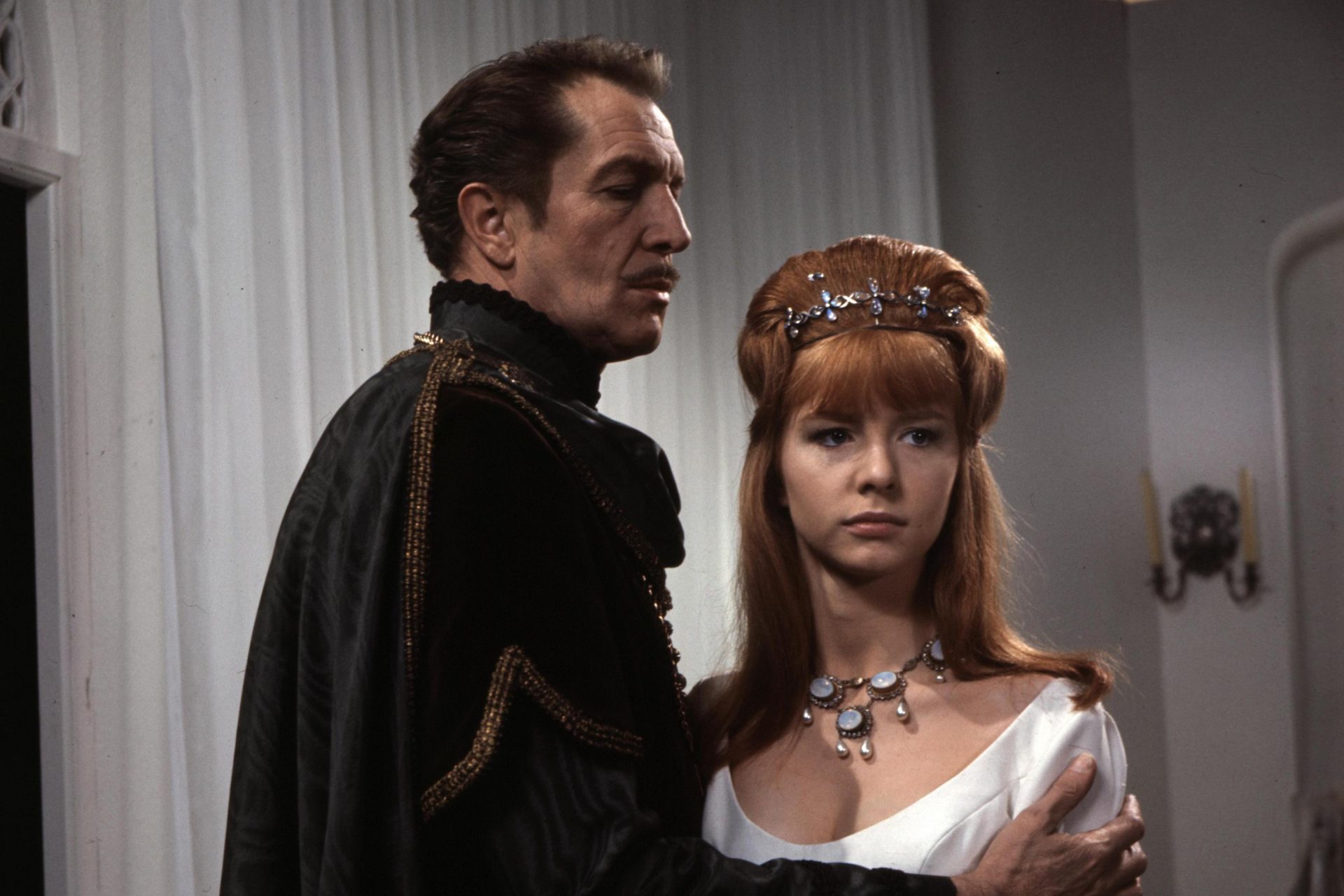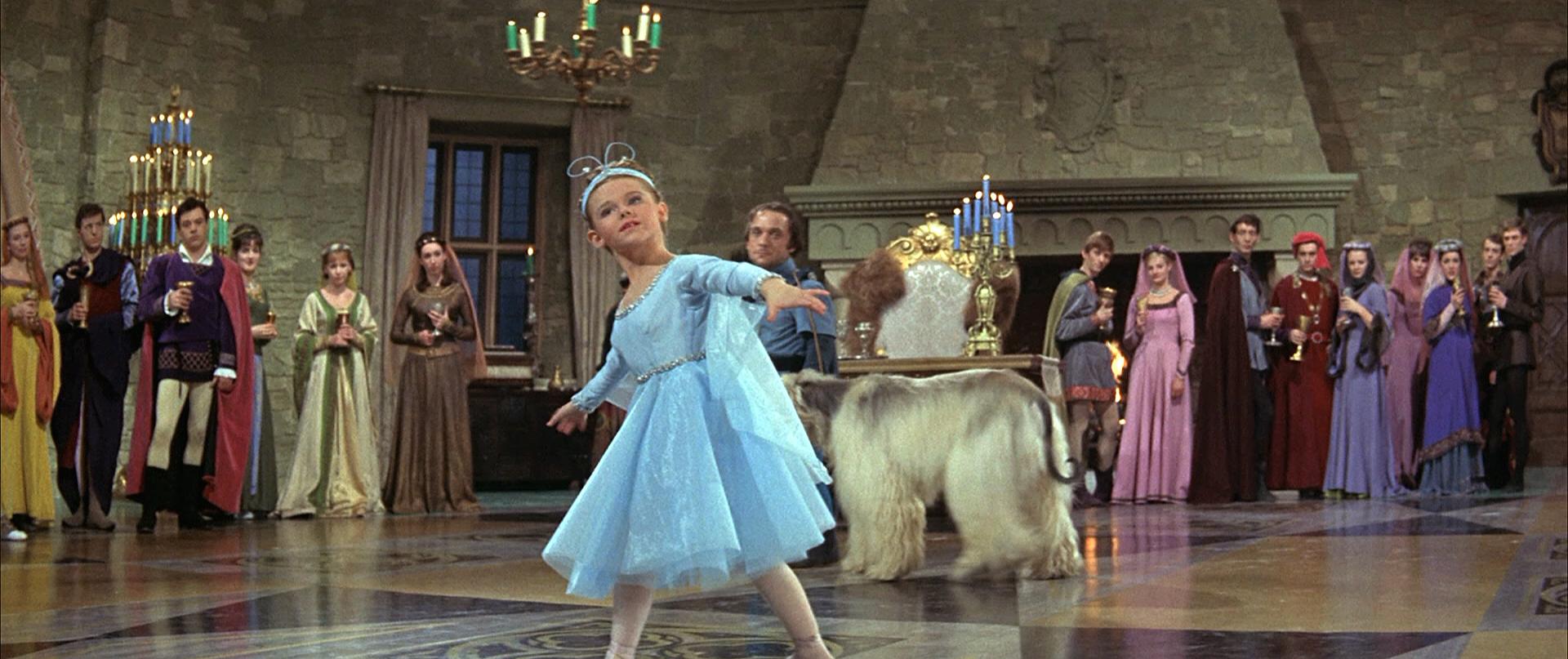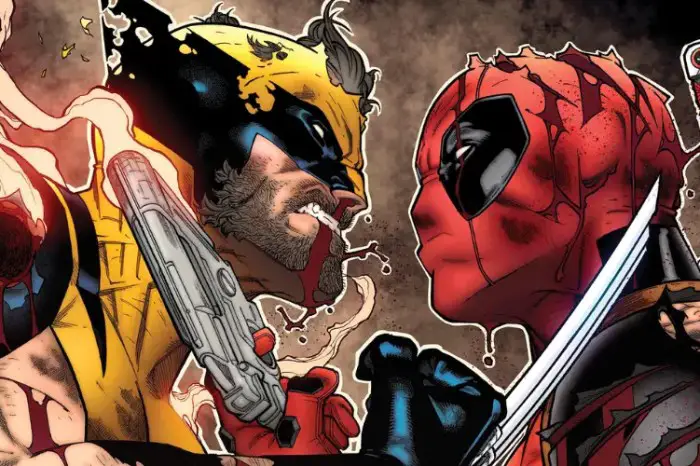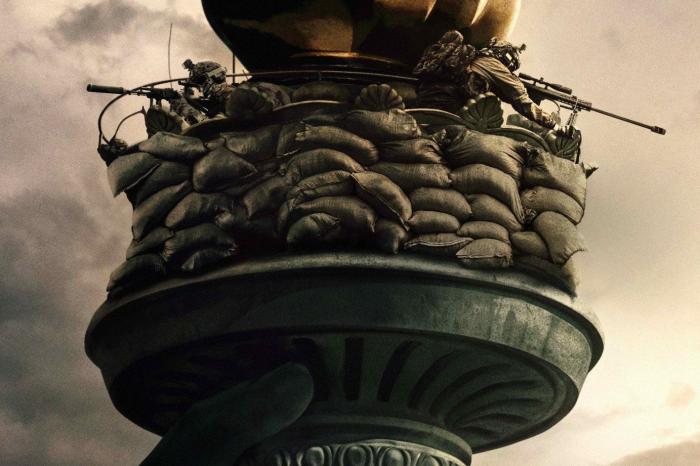Screen Screams: ‘The Masque of the Red Death’ Review
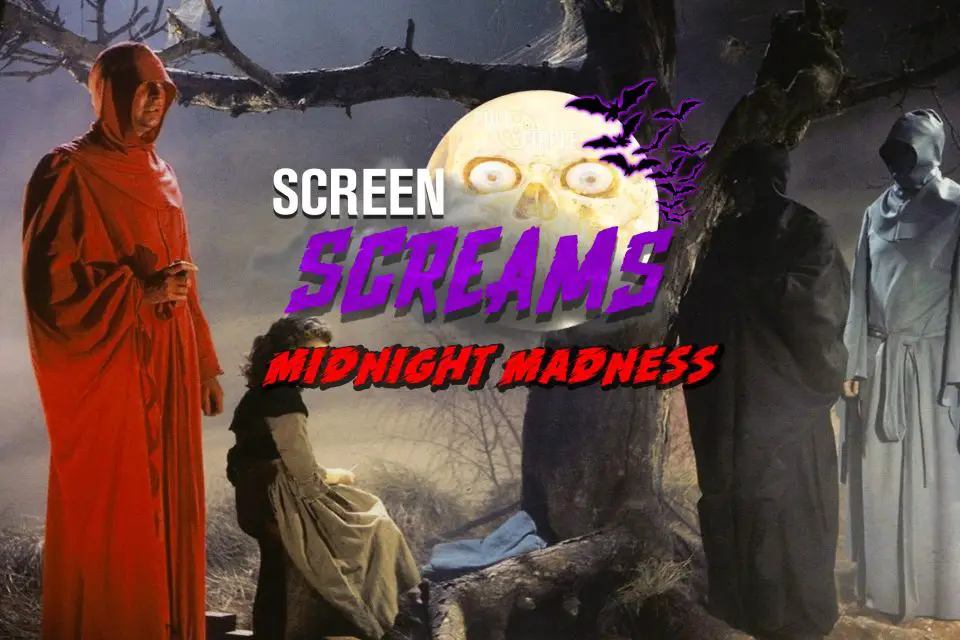
It’s that time of the year again. The month of October is upon us. So to celebrate, we at Full Circle Cinema put together another curated, month-long series with Screen Screams. This year, we will be checking our clocks as we wait in anticipation for the forbidden delight we call “the midnight movie”. And with midnight movies comes a variety of projects that are perhaps too niche for the masses. Today, it’s time to don Roger Corman’s 1964 adaptation of Edgar Allan Poe’s The Masque of the Red Death.
Although I have read and enjoyed Poe’s The Masque of the Red Death, my interpretation of that poem may conflict with the general consensus of scholars who study Poe. As a result, I will not focus on that. Instead, I will view Corman’s The Masque of the Red Death as a standalone work. And after all, if the film doesn’t captivate the uninitiated, how good is it really?
Fortunately, this particular adaptation of The Masque of the Red Death feels timeless. It’s not so much different from its source material that its DNA is absent. However, it accomplishes the Herculean feat of making Poe’s material feel fresh not only for 1964 but also for today. It’s a beautiful adaptation that takes its source material down bold avenues.
Prince Prospero (Vincent Price) is a decadent, nihilistic ruler who has deluded himself into justifying a bleak view on humanity. As a result, he has fallen prey to Satanic ideals, believing that personal pleasure, above all else, is what should be desired in life. The debaucherous shenanigans that take place in his castle are evidence of just how far down he is in this rabbit hole. Nobles parade themselves around like animals at Prospero’s request. Standards set by the Christian view of morality are actively spat on, all for the sake of keeping the nobles entertained during a self-imposed quarantine. How timely! The reason for their isolation is a mysterious plague they call the Red Death.
READ: Screen Screams: ‘The Devils’ Review
Despite the danger present in the wild, the nobles’ castle seems like the most dangerous place to find oneself. Hence why an innocent, rural, Christian named Francesca (Jane Asher) spends most of the film in a confused state of wide-eyed panic. It’s a one-dimensional performance, but effective in making the audience sympathize with her character.
The film makes Prospero’s cruelty clear during the opening scene where he torches a village belonging to Francesca, Gino (David Weston), and Ludovico (Nigel Green) before bringing them to his castle for entertainment. Gino and Ludovico are expected to fight to the death, while Francesca is expected to provide pleasure to Prince Prospero. It’s not a great situation for any of the three characters, and the inherently upsetting nature of their predicament makes them easy to empathize with.
What follows is an exercise in establishing dread which culminates in an incredibly satisfying finale. The film comes full circle (no pun intended) in a wonderful way that solidifies every scene in the film as intentional and calculated. It’s a masterclass in delivering the kind of irony-tinged twist that is still popular in modern horror, with the most recent example coming to mind being Sam Raimi’s Drag Me to Hell. A horrible person gets blindsided by their comeuppance in a deliciously grim, unexpected way.
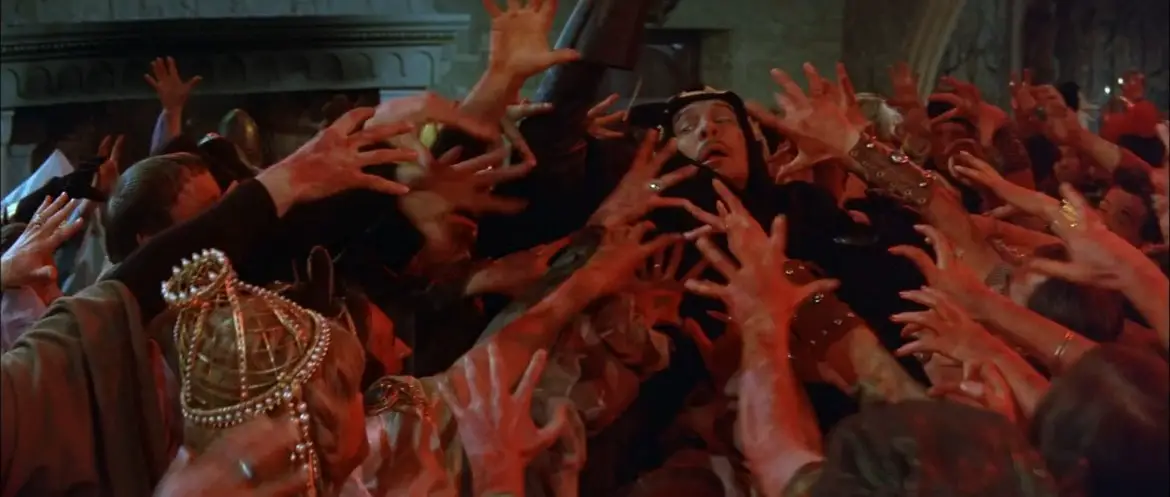
Price’s performance is magnetically despicable. Simply the tone of his voice belies evil as malice drips from every syllable. Even the most long-winded of his elaborate monologues is captivating due to Price’s skill as a performer. He’s undeniably effective at delivering an uncomfortable presence that the audience can’t look away from. Suffice to say, I’m going to make an active effort to seek out more of Price’s work. It’s a shame that, for the longest time, I only knew him as the man who contributed to Michael Jackson’s “Thriller.”
READ: ‘New York Ninja’ Review: “I ❤️ NY NINJA”
The sense of scale present in the sets is massive. Coordinated extras rabble about, giving off the same feeling I get when watching an ambitious theatre production. Many scenes in this movie are busy, but not overwhelmed by the actors’ blocking. It’s a fine line to walk, and the cast manages to tiptoe along it miraculously.
The cinematography is also no slouch. Courtesy of Nicolas Roeg, who later went on to direct Don’t Look Now and The Man Who Fell to Earth, it is simultaneously dynamic and restrained. The camera creeps along the perimeter of the lavish sets, showcasing the meticulous attention to detail present in every set piece. The film is gorgeous, even if some costumes look like they came from a local theatre production of The Tempest.
Additionally, the gorgeous lighting present in The Masque of the Red Death is fairly ahead of its time. Using bold color schemes, the vibrant hue given to each unique chamber of the castle is reminiscent of what the Italian Giallo movement in horror would be popularizing in around a decade. It’s no coincidence that The Girl Who Knew Too Much came out only a year before this adaptation. Clearly, the lighting artists took cues from that film, but their influences enhance their work on this film immensely.
Overall, it’s difficult to think of a reason not to recommend this adaptation. It’s a lean, tense, mesmerizing descent into the depths, and consequences, of hedonism, greed, and selfishness. It may not be scary, but it’s thought-provoking and chilling in every frame.
Rating: 9/10
The Masque of the Red Death is available on home video and digital HD.


